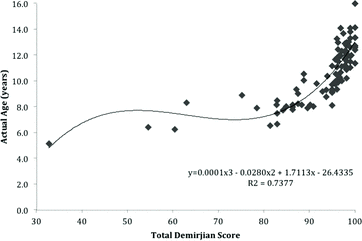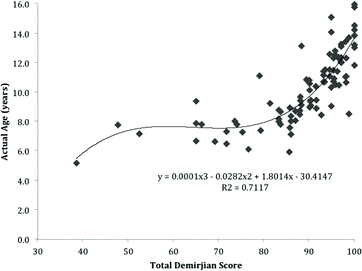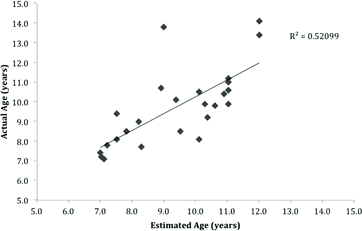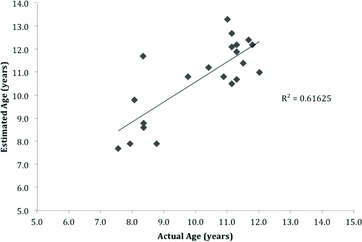Figures & data
Table 1. Breakdown of sample population by age and sex.
Figure 1. Differences between estimated and actual ages for girls using Demirjian’s centile charts (p<0.001).
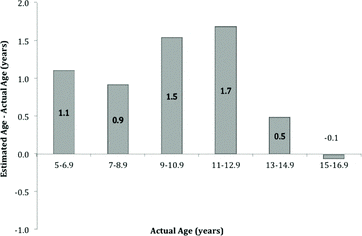
Figure 2. Differences between estimated and actual ages for boys using Demirjian’s centile charts (p<0.01).
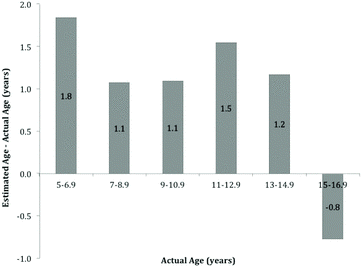
Table 2. Results from single sample t-test comparing the actual ages and ages estimated using Dermirjian's original model for girls.
Table 3. Results from single sample t-test comparing the actual ages and ages estimated using Dermirjian's original model for boys.
Figure 5. Differences between estimated and actual ages for girls using the Sudbury-specific centile charts.

Figure 6. Differences between estimated and actual ages for boys using the Sudbury-specific centile charts.

Figure 9. Proportions of cases with the maximum number of stages different, testing for intra-observer agreement.
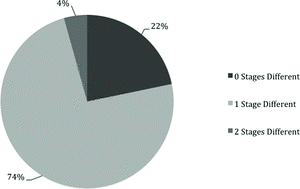
Figure 10. Proportions of cases with the maximum number of stages different, testing for inter-observer agreement.
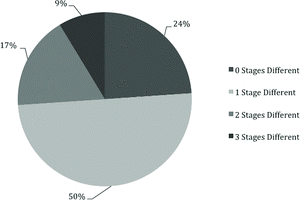
Table 4. Summary of the previously completed population studies for Demirjian's method.

